Dan Byman writes that Lone Wolves are having a real, indeed a strategic, impact today by helping change the politics in the United States and Europe and, in so doing, are shattering the good relations between Muslim and non-Muslim communities so vital to counterterrorism and to liberal democracy in general. This piece originally appeared on Lawfare.
The year 2016 was the year of the Lone Wolf terrorist. In the United States, Omar Mateen, a loser who pledged himself to the Islamic State as he attacked a gay nightclub in Florida, killed 49 people in the deadliest terrorist attack on U.S. soil since the 9/11 attacks. Europe too saw numerous attacks that involved individuals or small groups with only loose connections to the Islamic State.
The Lone Wolf threat is hardly new. Islamist groups, right-wing white supremacists, abortion foes, and separatists of various stripes have all used this tactic with varying degrees of success. Over a century ago, lone anarchists killed presidents and prime ministers in their campaign to overturn what they saw as oppressive governments and bourgeois society. The deadliest terrorist attack on U.S. soil before 9/11 occurred in 1995, when white supremacists Timothy McVeigh and Terry Nichols bombed the Murrah Federal Building in Oklahoma City. In 2009, another right-wing extremist, Anders Behring Breivik, killed 77 people in Norway. Lone Wolves, however, seem to be growing in number. The scholar Ramon Spaaij found that although absolute numbers remain low, the numbers of attacks since the 1970s grew almost 50 percent in the United States and by over 400 percent in the other countries he surveyed.
[I]t is the rare Lone Wolf who is truly alone.
Precise numbers are difficult to come by, as it is often unclear how lonely Lone Wolves really are. A Lone Wolf is traditionally described as someone who operates on their own and is not part of a group, network, or directed by an outside organization. However, it is the rare Lone Wolf who is truly alone: the San Bernardino killers were married, and the Nice cargo truck driver was in contact with a range of radicals. An excellent New York Times report revealed that the Islamic State leaders operating remotely from Syria often exercise various degrees of influence and direction of many attackers at first thought to be acting alone. Think of them really as lone-ish wolves—wolves who are either acting alone or in very small packs.
The Lone Wolf logic is tied to the terrorists’ weakness, not its strength, which is why so many diverse groups have embraced it over the years. In 1983, white supremacist Louis Beam pushed for “leaderless resistance,” arguing that the federal government was too strong for any citizens’ movement to oppose it directly and that like-minded groups should operate independently without central coordination. “The concept of Leaderless Resistance is nothing less than a fundamental departure in theories of organization,” Beam wrote, using bold font to emphasize his point. Traditional groups with tight command and control “are easy prey for government infiltration, entrapment, and destruction of the personnel involved.” He admitted that “Leaderless Resistance is a child of necessity” but one that can create “an intelligence nightmare.”
Despite these many advantages, most terrorist groups have shied away from using Lone Wolves—at least most of the time. Mateen’s high death tolls is rare—indeed off the charts—compared with the vast majority of Lone Wolves, who usually kill only a small number, if any before being killed or arrested themselves. In comparing plots involving individuals who had fought as foreign fighters and thus had some training with those who had not, the terrorism scholar Thomas Hegghammer finds that the presence of a veteran from a foreign jihad both dramatically increases the chance that a terrorist plot will succeed and makes the overall lethality higher. Professionalism matters.

Yet for all these downsides, the Lone Wolf danger may be growing. The Islamic State in the past urged its sympathizers to come to Syria to help the fledgling state defend itself and expand: the ultimate honor. Lone Wolf attacks were for those who could not travel to the Islamic State. In 2016, however, the group’s spokesman and external operations leader Muhammad al-Adnani declared, “The smallest action you do in the heart of their land is dearer to us than the largest action by us and more effective and more damaging to them.”
And Islamic State supporters are listening. The last two years have seen a surge in Lone Wolf attacks and attempts in both Europe and the United States. As the Islamic State emerged on the scene, both the United States and Europe saw roughly (much depends on exactly what is counted) twice as many successful Lone Wolf attacks in 2015 and 2016 as they did in the 2011-2014 period.
The Islamic State is making such a shift as matter of necessity, as consolidating and expanding the core state may no longer be an option. The United States, France, and other countries, working together with local forces, are hitting the Islamic State’s corein Iraq and Syria hard, shrinking the territory under the group’s control. Other major areas of operations are also under serious pressure, such as in the Islamic State’s “province” Libya, with the group’s defeat in its stronghold of Sirte in December. The self-proclaimed state is short of funds and the number of foreign recruits is declining. Like all terrorist groups, the Islamic State needs victories to inspire new recruits and prevent existing cadre from losing hope.
Technology also better enables a Lone Wolf credo. When Beam and other white supremacists urged individuals and unconnected small groups to attack, they hoped that a few racist tracts would disseminate among key parties to give the overall effort a general coherence. The Internet, particularly through various forms of social media, put Beam’s ideas on steroids. Now even small groups can disseminate broader goals widely. A young Muslim in Billings or Brussels can read the words of ideologues like Adnani or the late al-Qaida cleric Anwar al-Awlaki after just a quick Google search.
Perhaps most worrisome, Lone Wolf shootings are becoming part of the terrorist zeitgeist and as such, feed on themselves. As seems to have happened with school shootings, where Columbine killers Eric Harris and Dylan Klebold created a model for other violent misfits, an idea of terrorist violence is hanging in the air, and that attracts a small group of individuals who might otherwise have turned their thoughts in another direction.
Lone Wolves are having a real, indeed a strategic, impact today by helping change the politics in the United States and Europe.
If we focus only on casualties, Lone Wolves should remain of limited concern, however horrifying any individual attack might be. The trouble is that Lone Wolves are having a real, indeed a strategic, impact today by helping change the politics in the United States and Europe and, in so doing, are shattering the good relations between Muslim and non-Muslim communities so vital to counterterrorism and to liberal democracy in general. Lone Wolf attacks are increasing Islamophobia in the West. After attacks in Paris and San Bernardino, concern about terrorism spiked. In the weeks following the Paris attacks in November 2015, London’s Metropolitan Police Service announced that attacks targeting Muslims had tripled.
This Islamophobia, in turn, can begin a dangerous circle. As communities become suspect, they withdraw into themselves and become less trustful of law enforcement. They provide fewer tips and otherwise are reluctant to point out the bad apples among them. In contrast, if a community has good relations with the police and society in general, it has fewer grievances for terrorists to exploit and is more likely to point out malefactors in their midst. Even though he was never arrested, Mateen came to the FBI’s attention because a local Muslim found him worrisome.
Such problems risk fundamental changes in politics and undermine liberal democracy. Far-right movements are growing stronger in several European countries. In the United States, Islamophobia and fears of terrorism—despite very low rates of terrorist attacks or fatalities on U.S. soil since 9/11—have fueled the rise of Donald J. Trump and other anti-immigrant politicians. Even beyond the cost for counterterrorism, this sentiment leads to low-level violence against minorities, including non-Muslim minorities such as Indians and Sikhs working in the United States, and degrades politics in general.
Lone Wolves cannot be stopped completely, but their numbers can be reduced and the resulting threat diminished. One of the most important measures involves keeping Lone Wolves lonely: the less they can interact with potential co-conspirators, and in particular with dangerous groups that give them direction and training, the less dangerous they will be. Intelligence gathering and arrests of suspected cell leaders and targeting terrorist command and control via drone strikes is thus vital.
The Islamic State’s heavy reliance on social media to publicize its message and share information with recruits is a vulnerability as well as a benefit for the group. U.S. intelligence should continue to exploit social media to identify potential group members and to disrupt their activities. Such monitoring is particularly important when seeking to identify potential Lone Wolves or those with no direct international connection, as they may be encouraged by online operatives or post their intentions online as a form of bragging and belonging.
The United States can also plant disinformation into the Islamic State’s network. The group is already highly suspicious of perceived infiltrators—some potential foreign fighters have been rejected or even executed as potential spies—and playing on this paranoia is appropriate. Messages might play up the presence of moles, discuss the likelihood of defections, and otherwise sow distrust within the group’s ranks.
One clear recommendation–and the one least likely to be heeded in the aftermath of a terrorist attack—is to ensure community support from Muslims living in the United States. Simply put, good community relations minimize motivations for violence and encourage local cooperation with authorities. In the United States, better community relations could mean working with faith-based local organizations as a way of ensuring ties to the community. Often it is important to address non-terrorism issues such as crime in order to win over local community leaders; indeed, framing terrorism issues in terms of public safety is more effective than talking about it as counterterrorism in isolation, as Muslim communities rightly fear being singled out on terrorism while anti-Muslim harassment and worse is ignored. National programs are best used to provide resources, share best practices, and coordinate, allowing local experimentation and diversity to dominate.
These measures, whether alone or in combination, do not stop all Lone Wolves. But they do make them more likely to be caught, less lethal even when undetected, and less effective even after a bloody attack. In particular, they are vital for minimizing the political impact of Lone Wolf attacks and, in so doing, making the phenomenon as a whole less likely and less dangerous.
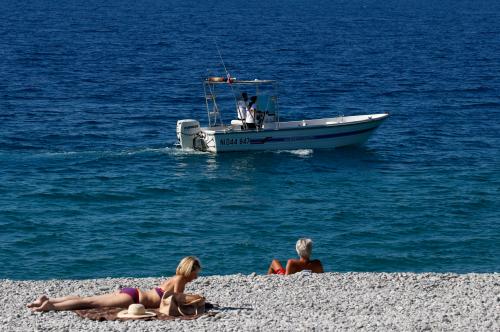
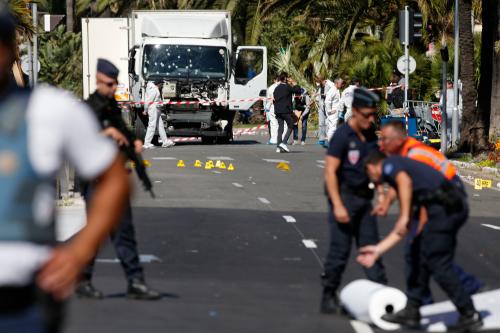
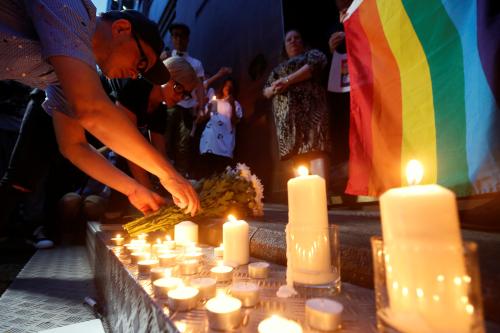
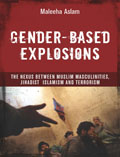
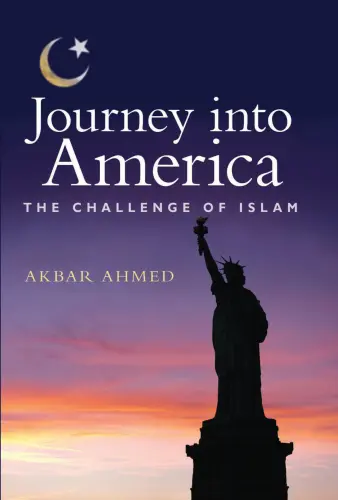





Commentary
Can lone wolves be stopped?
March 15, 2017